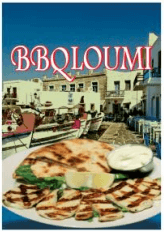
Just in time for the start of the barbeque season – HALLOUMI / BBQLOUMI case keeps the courts busy
In determining the likelihood of confusion between the EU collective mark “HALLOUMI” and the figurative mark containing the word element “BBQLOUMI”(as depicted below), the Court of Justice of the European Union (CJEU) found that the General Court failed to examine whether the low degree of similarity between the marks could be offset by the identity and higher degree of similarity between the goods. As a result, the CJEU referred the case back to the General Court to carry out a proper ‘global assessment’ of the likelihood of confusion.
Background In 2014, the Bulgarian based company, M. J. Dairies EOOD, applied to register an EUTM for a figurative mark containing the word element “BBQLOUMI” (as depicted below) for ‘dairy products, cheeses, sandwiches and restaurant services’ in Classes 29, 30 and 43.

The Foundation for the Protection of the Traditional Cheese of Cyprus named Halloumi (the “Foundation”) filed an opposition against this application based on its EU collective trade mark “HALLOUMI”, registered for cheese, on the grounds of a likelihood of confusion.
An EU collective mark indicates that the goods or services protected by that mark originate from members of a certain association and that the mark may only be used by them.
The Opposition Division rejected the Foundation’s opposition, which was unsuccessfully appealed to the EUIPO Board of Appeal and General Court. The General Court rejected the appeal on the basis that there was no likelihood of confusion because, although the goods at issue were identical and similar, the HALLOUMI mark had a weak distinctive character (because the mark described a well-known Cypriot cheese) and there was a low degree of visual, phonetic and conceptual similarity between the marks.
Decision
The CJEU ruled that, where the earlier mark is a collective mark, here “HALLOUMI”, it must nevertheless be able to still fulfil its essential function. This essential function is to distinguish the goods of the members of the association, which is the proprietor of that trade mark from those of other undertakings, and the degree of distinctiveness of that mark is a relevant factor for the purposes of assessing whether there is a likelihood of confusion.
The CJEU agreed with the General Court that the HALLOUMI mark was of weak distinctive character. However, the CJEU held that the General Court erred in failing to examine whether the low degree of visual, phonetic and conceptual similarity between the marks could be offset by the identity, and higher degree of similarity, between the goods. As a result, the CJEU set aside the General Court’s judgment and referred it back to the General Court to carry out a proper ‘global assessment’ of the likelihood of confusion.
The explicit clarification that the criteria in question also apply to collective trade marks is a good sign for the owners of collective trade marks.








